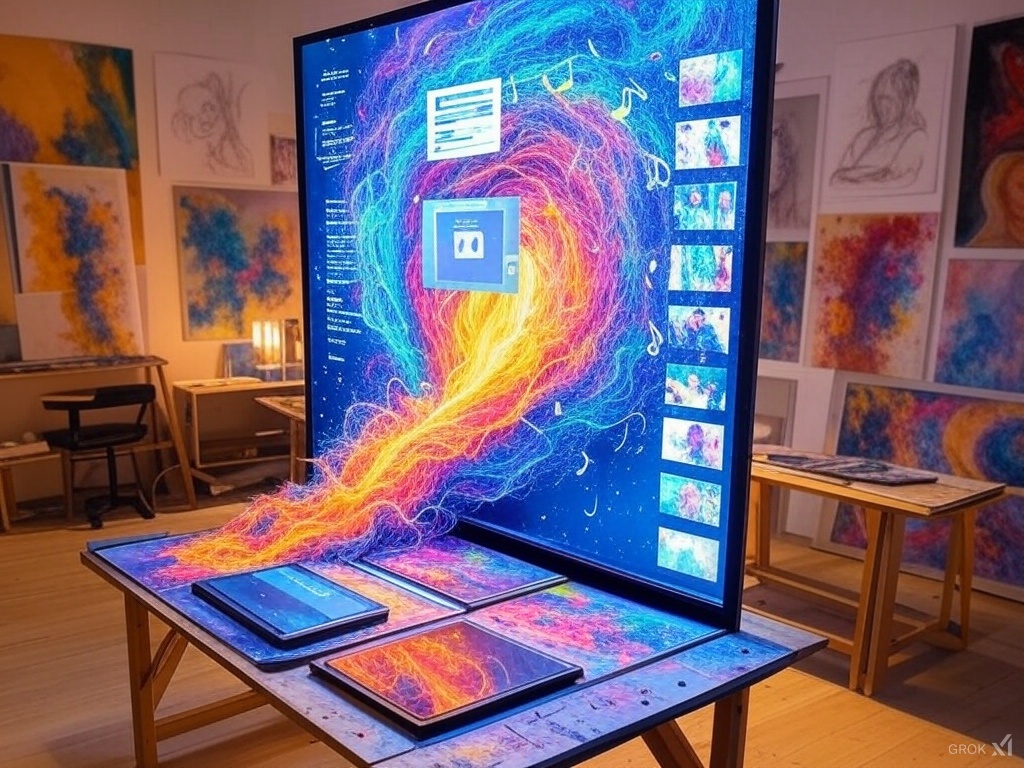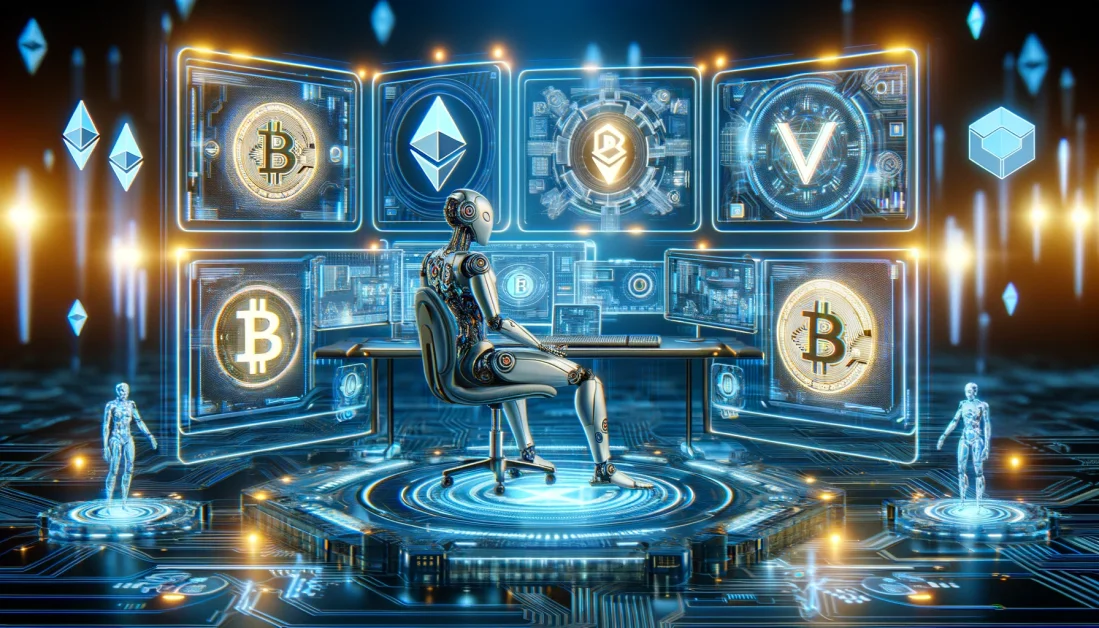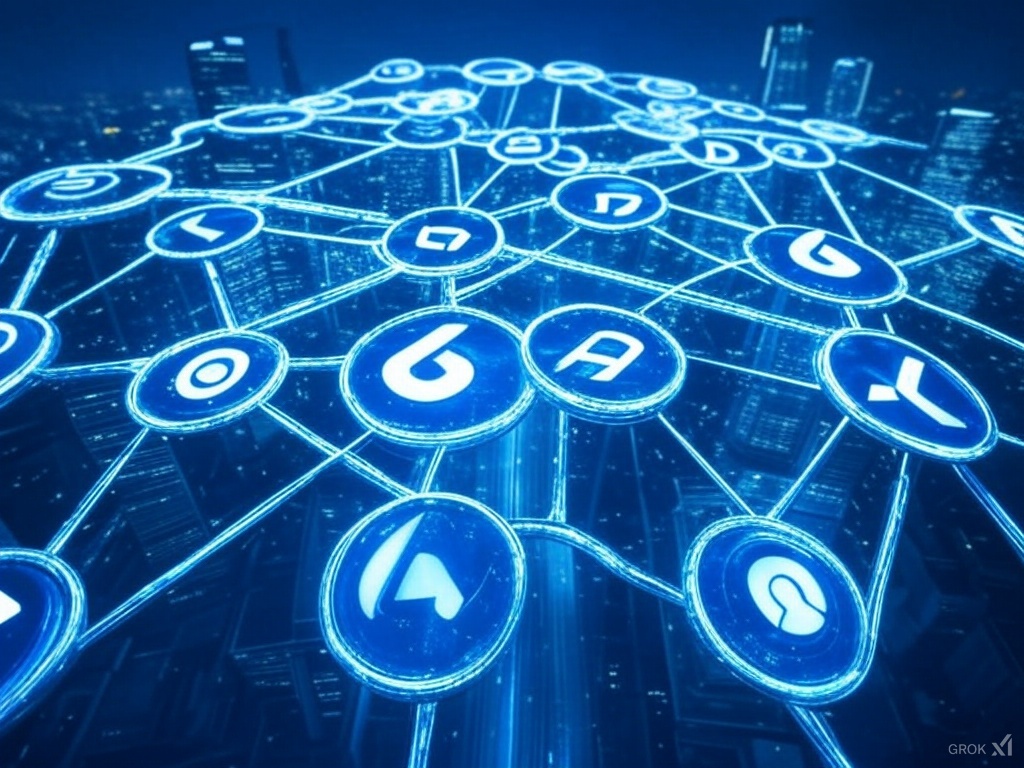The Dawn of Decentralized Intelligence
In 2025, we're witnessing the acceleration of two transformative technologies—artificial intelligence and blockchain—not as separate forces, but as complementary systems creating something greater than the sum of their parts: decentralized intelligence.
This convergence represents more than a technical evolution; it's reshaping how we think about data ownership, algorithmic governance, and the very nature of digital trust. As AI systems become more powerful and pervasive, blockchain technology is emerging as a critical framework for ensuring these systems remain transparent, accountable, and aligned with human values.
Let's explore how this convergence is manifesting across various domains and what it means for the future of technology.
AI Governance on the Blockchain
Perhaps the most immediate application of blockchain in AI is in governance and oversight:
1. Transparent AI Decision Records
As AI systems make more consequential decisions, blockchain provides:
- Immutable audit trails of AI decision processes
- Cryptographic verification of model versions used for specific decisions
- Timestamped records of input data and resulting outputs
The European Union's AI Transparency Directive now requires high-risk AI systems to maintain blockchain-based decision records, enabling regulators and affected individuals to verify compliance with fairness and safety standards.
2. Decentralized Model Governance
Blockchain-based governance systems are enabling:
- Democratic oversight of public-facing AI systems
- Token-based voting on model parameters and usage policies
- Multi-stakeholder approval processes for model updates
OpenAI's recent transition to a decentralized autonomous organization (DAO) structure has allowed its user community to participate in governance decisions, including content policies and feature prioritization.
3. Regulatory Compliance Frameworks
Blockchain is facilitating AI regulation through:
- Automated compliance verification for AI systems
- Smart contracts that enforce usage limitations
- Cross-border regulatory coordination
The International AI Compliance Network now uses a permissioned blockchain to coordinate regulatory approaches across 27 countries, reducing compliance complexity for AI developers.
Decentralized Data and Computation
The data and computational foundations of AI are being transformed by blockchain technologies:
1. Data Marketplaces and Ownership
Blockchain-based data markets are enabling:
- Individual ownership and monetization of personal data
- Granular permissions for AI training and inference
- Fair compensation for data contributions
Ocean Protocol's data marketplace now handles over 5 million daily transactions, allowing individuals to earn passive income from their data while maintaining control over its use.
2. Federated Learning on Blockchain
Combining federated learning with blockchain enables:
- Verifiable contributions to model training
- Fair attribution and compensation for improvements
- Trustless coordination between competing organizations
The Healthcare AI Consortium uses this approach to develop diagnostic models across 42 hospitals without sharing sensitive patient data, while blockchain ensures fair recognition of each institution's contributions.
3. Decentralized Compute Networks
Blockchain is coordinating distributed AI computation through:
- Marketplaces for GPU and specialized AI hardware
- Verifiable execution of model training and inference
- Micropayments for computational resources
Render Network's blockchain-based platform now provides more aggregate AI computing power than any single cloud provider, with over 1.2 million GPUs available globally.
AI-Enhanced Blockchain Systems
While blockchain provides governance for AI, artificial intelligence is simultaneously making blockchain systems more capable:
1. Intelligent Smart Contracts
AI is enhancing smart contracts through:
- Natural language processing for contract creation and interpretation
- Adaptive execution based on real-world conditions
- Anomaly detection for security vulnerabilities
Ethereum's new AI-enhanced smart contract layer has reduced coding errors by 87% while enabling contracts that can respond to complex real-world events.
2. Optimized Consensus Mechanisms
AI is improving blockchain performance via:
- Dynamic adjustment of consensus parameters
- Predictive load balancing across validator nodes
- Intelligent detection of malicious behavior
Solana's AI-optimized consensus has achieved sustained throughput of 100,000 transactions per second with sub-second finality, making it viable for real-time applications.
3. Enhanced Privacy Mechanisms
AI is strengthening blockchain privacy through:
- Advanced zero-knowledge proof generation
- Adaptive privacy settings based on transaction context
- Identification of privacy vulnerabilities in transaction patterns
Zcash's AI-powered privacy protocol now provides computational indistinguishability from random noise while reducing proof generation time by 95%.
Emerging Applications
This technological convergence is enabling entirely new applications across industries:
1. Autonomous Economic Agents
AI agents operating on blockchain networks are:
- Executing complex economic strategies with cryptographic verification
- Forming dynamic coalitions to achieve shared objectives
- Creating new markets for digital and physical resources
Fetch.ai's network of autonomous agents now manages logistics operations for three major European ports, optimizing container movements and reducing idle time by 31%.
2. Decentralized Scientific Research
The research process itself is being transformed through:
- Blockchain-verified data collection and analysis
- AI-driven hypothesis generation across distributed teams
- Transparent attribution and compensation for contributions
The Open Therapeutics Initiative has accelerated drug discovery by 40% through its blockchain-coordinated research network, with AI systems proposing novel compounds that human researchers then validate and refine.
3. Collective Intelligence Systems
New forms of human-AI collaboration are emerging through:
- Blockchain-based prediction markets enhanced by AI forecasters
- Reputation systems that combine human and machine evaluation
- Knowledge commons with verifiable contributions and fair attribution
The Climate Response DAO combines inputs from 10,000 human experts and dozens of specialized AI systems to generate adaptation strategies for vulnerable regions, with blockchain ensuring transparent decision processes.
Technical Foundations
These applications are built on several key technical innovations:
1. Verifiable AI Computation
New protocols enable:
- Zero-knowledge proofs of correct model execution
- Verifiable random sampling for fair training data selection
- Cryptographic commitments to model architectures and parameters
These mechanisms ensure that AI systems operate as intended, even in trustless environments.
2. Tokenized AI Incentives
Economic mechanisms include:
- Tokens for data contribution, model training, and governance participation
- Automated market makers for AI resources and outputs
- Staking mechanisms that align long-term incentives
These systems create sustainable economic models for decentralized AI development.
3. Interoperable Standards
Cross-platform compatibility is enabled by:
- Standardized APIs for AI-blockchain integration
- Cross-chain bridges for AI assets and computations
- Universal identity systems for humans and AI agents
The AI-Blockchain Interoperability Alliance now includes all major cloud providers and blockchain platforms, establishing common standards for seamless integration.
Challenges and Limitations
Despite rapid progress, significant challenges remain:
1. Scalability Constraints
Current limitations include:
- Blockchain throughput bottlenecks for high-frequency AI operations
- Storage costs for large model parameters and training data
- Latency issues for real-time AI applications
Layer-2 solutions and purpose-built AI blockchains are addressing these issues, but full scalability remains a work in progress.
2. Governance Complexity
Decentralized governance faces challenges in:
- Balancing technical expertise with democratic participation
- Managing the complexity of AI system parameters
- Responding quickly to emerging risks and opportunities
Hybrid governance models combining professional oversight with community input are emerging as a promising approach.
3. Regulatory Uncertainty
The regulatory landscape remains unsettled regarding:
- Liability for autonomous AI decisions on blockchain
- Cross-border jurisdiction for decentralized systems
- Classification of AI-generated assets and tokens
The International Decentralized Intelligence Commission is working with regulators from 31 countries to develop coherent frameworks, but significant ambiguity persists.
The Path Forward
For organizations looking to leverage this convergence, we recommend a strategic approach:
1. Start with Hybrid Systems
Begin the journey with:
- Blockchain-verified audit trails for existing AI systems
- Selective decentralization of non-critical components
- Experimental token economics for internal processes
These incremental steps provide valuable experience while minimizing disruption.
2. Invest in Interoperability
Future-proof your systems by:
- Adopting open standards for AI-blockchain integration
- Building modular components that can connect to multiple platforms
- Participating in cross-industry standardization efforts
This approach preserves optionality as the technology landscape evolves.
3. Engage with Governance
Shape the future of these technologies by:
- Participating in decentralized governance of key platforms
- Contributing to open-source development efforts
- Engaging with regulatory discussions in your industry
Active participation ensures that these systems evolve in alignment with your organization's needs and values.
Conclusion: The New Digital Infrastructure
The convergence of AI and blockchain represents more than a technological trend—it's the emergence of a new digital infrastructure that combines intelligence, trust, and collective governance. This infrastructure will likely become as fundamental to tomorrow's applications as cloud computing and mobile connectivity are today.
Organizations that understand and engage with this convergence now will be well-positioned to thrive in an economy increasingly built on decentralized intelligence. The question is no longer whether these technologies will transform business and society, but how quickly the transformation will unfold and who will shape its direction.
As with previous technological revolutions, the greatest opportunities will belong to those who don't just adopt the technology, but reimagine their products, services, and organizations around its unique capabilities.



